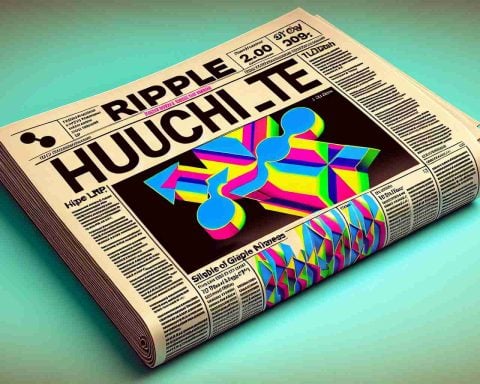Amidst the rapidly evolving cryptocurrency landscape, IOTA is emerging as a distinctive digital currency with a fascinating technological edge. Unlike more traditional cryptocurrencies such as Bitcoin and Ethereum that utilize blockchain technology, IOTA adopts an innovative system called Tangle, based on a Directed Acyclic Graph (DAG) structure. This unique architecture positions IOTA to be a key player in the evolving Internet of Things (IoT) ecosystem.
MIOTA, the unit used in IOTA transactions, boasts several notable characteristics that differentiate it from its blockchain counterparts. Transactions via Tangle are both fee-free and infinitely scalable, allowing seamless microtransactions across a network of smart devices without incurring additional charges. This setup is designed to facilitate interactions across IoT devices, making it accessible through just a phone or computer.
Unlike blockchain systems that often require energy-intensive mining processes, IOTA requires no miners. Instead, users validate their transactions by confirming two previous ones, creating a system that naturally scales with popularity and user engagement.
Despite its cutting-edge advantages, including resistance to quantum computing threats, IOTA has confronted security challenges. A notable breach in 2017 highlighted vulnerabilities within the system, impacting transaction volumes and market trust. Yet, the network’s potential for speed and efficiency remains a compelling draw.
Digital currencies like IOTA operate outside the realm of conventional regulation, posing both opportunities and risks. As these currencies gain attention from investors, stakeholders must weigh the promise of technological innovation against the inherent volatility and security risks associated with decentralized finance systems.
The Future of Cryptocurrency: Navigating the Pros and Cons of Investing in IOTA by 2025
The cryptocurrency market is a dynamic and rapidly evolving domain, drawing the interest of investors and technology enthusiasts alike. Among these digital currencies, IOTA is garnering attention for its unique technological framework and potential applications in the Internet of Things (IoT) ecosystem. Investors exploring options in 2025 need to consider several aspects, including cryptocurrency rate predictions, the inherent risks, and the pros and cons of such investments.
How IOTA Stands Out
One of IOTA’s most compelling features is its use of the Tangle network, a Directed Acyclic Graph (DAG) structure, instead of blockchain. This design offers fee-free transactions and infinite scalability, making it particularly attractive for microtransactions among smart devices. However, potential investors should be aware of the controversies and challenges that come along with these benefits.
Investment Risks and Considerations
Cryptocurrency investments are often associated with high volatility and significant risks. IOTA, while innovative, is no exception. Its past security breaches, notably in 2017, reveal vulnerabilities that affected market perception and transaction volumes. These incidents serve as a cautionary tale for investors, emphasizing the need for due diligence and preparedness for unforeseen challenges in the crypto space.
Cryptocurrency Rate Predictions for 2025
While predicting exact cryptocurrency rates is inherently uncertain, analysts suggest that IOTA could potentially experience growth given its unique position in the IoT market. As the IoT ecosystem expands, demand for frictionless, scalable transactions may increase, driving interest in IOTA’s Tangle technology.
Pros and Cons of Investing in IOTA
Pros:
1. Scalability and Zero Fees: IOTA’s Tangle offers promising scalability without transaction fees, an advantage over traditional blockchain networks.
2. IoT Integration: Designed for the IoT ecosystem, IOTA is well-positioned to capitalize on the increasing interconnectivity of devices.
3. Energy Efficiency: Unlike cryptocurrencies reliant on mining, IOTA’s transaction validation method is less energy-intensive, making it more sustainable.
Cons:
1. Security Concerns: Past incidents highlighted security flaws that shaken investor confidence.
2. Market Volatility: As with most digital currencies, IOTA’s market value is subject to significant fluctuations.
3. Regulatory Uncertainty: Operating outside conventional regulatory frameworks poses both opportunities and risks, which require careful navigation.
Conclusion
For investors contemplating IOTA as part of their cryptocurrency portfolio for 2025, it is crucial to weigh the potential rewards against the risks and uncertainties. Staying informed about technological advancements, regulatory developments, and market trends will be key to making sound investment decisions.
For further insight into cryptocurrencies and the evolving landscape of digital finance, you can explore resources such as CoinDesk’s main site for the latest updates and analyses.
















